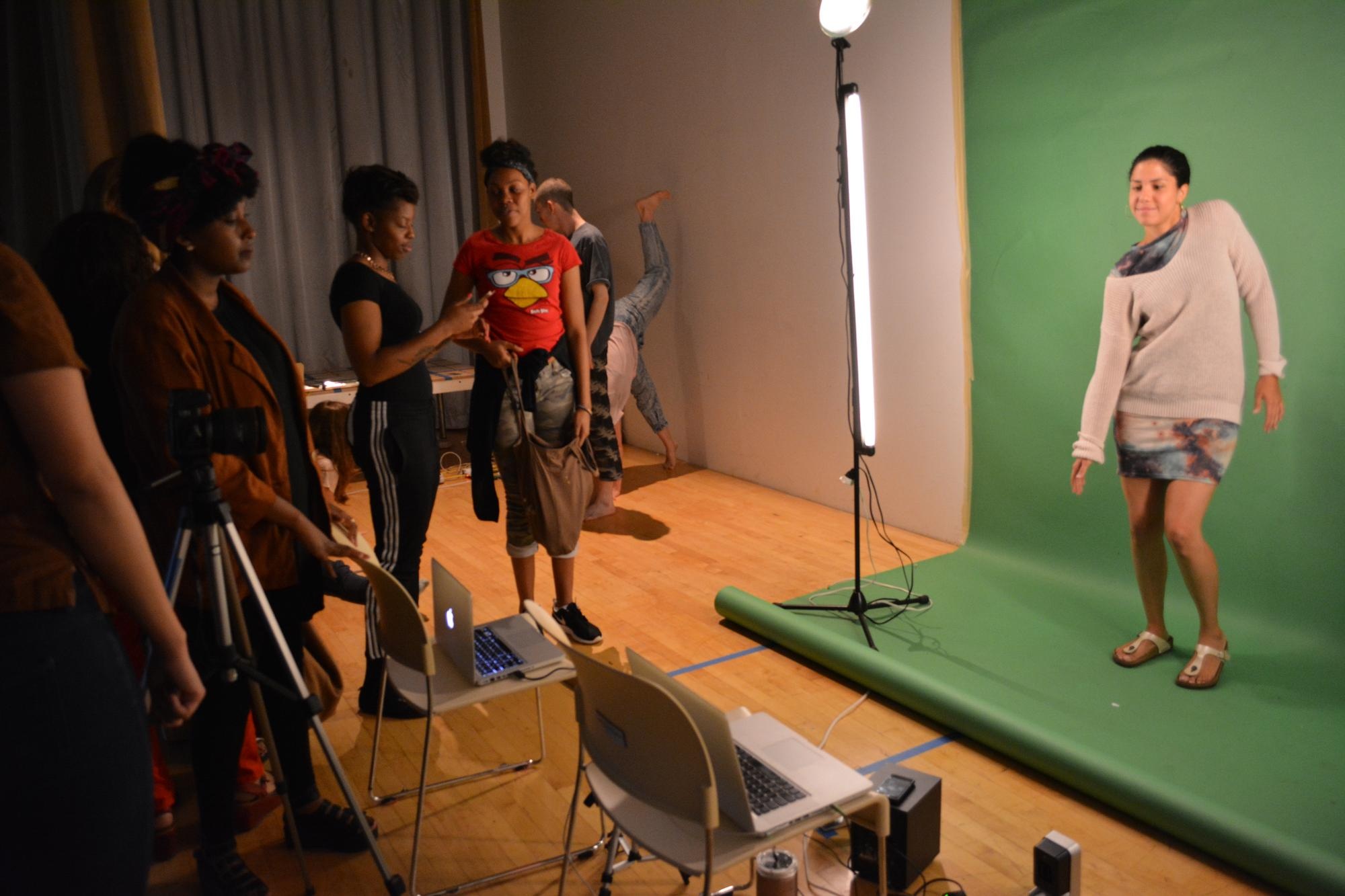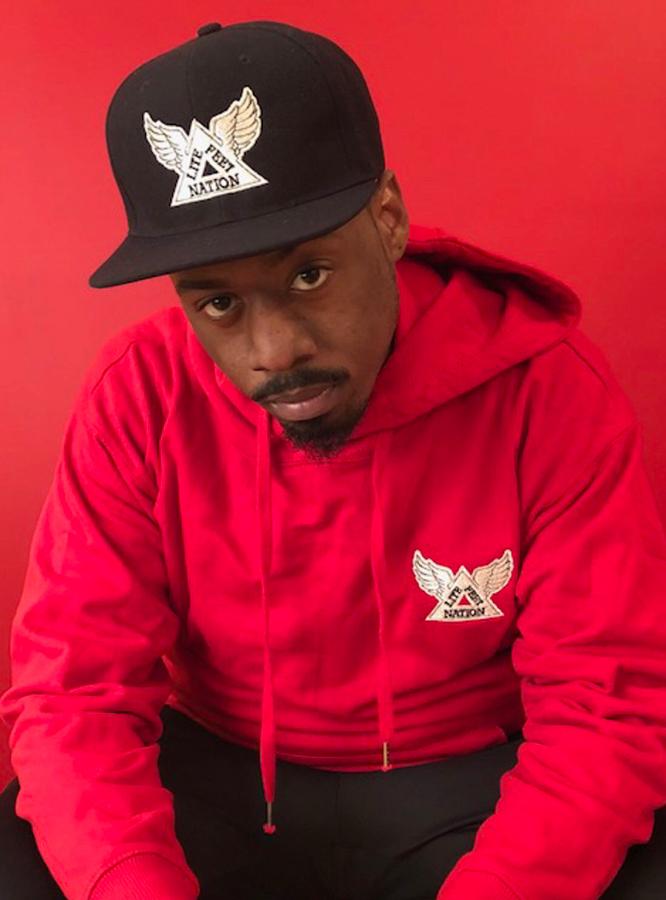Experiment 1 — Related Works: LEVEL UP: The Real Harlem Shake (2015)

Background
As part of the Creation & Computation course, each student submitted 5 experiments in creative computing. To accompany our explorations, we were tasked with selecting one work or grouping of works (artwork, design project, research artifact, technology innovation, etc.) that was related to the theme or tools of the current experiment.
The theme for Experiment 1 was computer vision and/or body as controller work, and we learned how to use p5.js.
The following post gives an overview of the work I selected, and how it relates to the theme. If you would like to see what I created for Experiment 1, check out my post: on "Screwed Body Reverberations".
Table of Contents
Description of the work
"LEVEL UP: The Real Harlem Shake" is an interactive video game as part of the AUNTSforcamera residency at the New Museum (Sud 2014). The game, which utilizes hacked Kinect software, rewards players for how closely they come to performing the original Harlem Shake (New Museum 2015). The Harlem Shake is a dance that originated in the 1980s in Harlem, New York (Keating 2013).
The game was developed by Salome Asega, Ali Rosa-Salas, Chrybaby Cozie, and and other Litefeet dancers, who are the keepers of the Harlem Shake (Asega et al. 2017). The game was created following the viral dance craze from Baauer’s Harlem Shake, which generated 4,000 uploads YouTube uploads per day and buried YouTube videos of the original Harlem Shake (Asega et al. 2017; Soha and McDowell 2016).

“Level Up: The Real Harlem Shake” investigates the history of the dance and principally focuses on the role of digital media platforms in “archiving the legacy of contemporary dance movements” (Sud 2014). In particular, the work centers around the virtual eradication of the genuine Harlem Shake through the meme, and the difficulties faced by urban arts communities with respect to thoughtless appropriation and ownership (Sud 2014).
(Asega, Rosa-Salas, and Cozie 2014)
As the artists put it, “this erasure is an act of violence in our perspective, a devaluation of black cultural production for mass media palatability” (Gomes 2014a). Ali Rosa-Salas, one of the artists, became interested in developing the installation after watching multiple commercials and concerts where dance forms like vogueing and hip-hop were presented as part of corporate campaigns without consideration or acknowledgement of the dances’ black cultural antecedents (Gomes 2014a).

Why or how this relates to the computer vision and/or body as controller work we are doing in Experiment 1
This work relates to Experiment 1 because it makes use of a hacked Xbox Kinect camera (computer vision) to measure and record the accuracy of the participant performing the “Harlem Shake,” (body as a controller) which is performed on camera by Chrybaby Cozie (Gomes 2014a).
As the SciArt Initiative magazine notes:
“The format of the Level Up exhibit speaks to this very real sense of co-optation. Chrybaby Cozie performs the original Harlem Shake in the format of an instructional dance video, invoking participants to enter into his performative space as an engaged equal as opposed to a passive observer and consumer of cultural dance.” (Gomes 2014a)
Creators of the work
Salome Asega

Salome Asega (she/her) is an artist, educator, and researcher whose practice celebrates dissent and multivocality (Asega 2020). She believes it’s important to share access to arts and tech institutions and spaces with others and would classify herself as a public interest technologist (Asega 2018). Many of her projects involve a participatory or collaborative process, grounded in conversations where participants are making certain conceptual or design decisions (Dee 2018).
Currently, she works as a Technology Fellow in the Ford Foundation's Creativity and Free Expression program territory (Asega 2020). She is also a Director of Partnerships at POWRPLNT, a digital art collaboratory in Bushwick, NY that provides affordable tech-meets-art workshops for BIPOC, womxn, and gender nonconforming people (King 2019), and the Co-Host of the speculative talk show Hyperorpia: 20/30 Vision on bel-air radio (Asega 2020).
Salome has taken part in fellowships and residencies with Eyebeam, New Museum, The Laundromat Project, and Recess Art (Asega n.d.). She has given presentations and has displayed her works at the eleventh Shanghai Biennale, Performa, EYEO, and the Brooklyn Museum (Asega n.d.).
Salome has an MFA in Design and Technology from Parsons School of Design at The New School, the institution where she is also a faculty member (Dee 2018).
Follow her on Twitter and Instagram!
Ali Rosa-Salas

As Director of Porgramming at the Abrons Arts Center/Henry Street Settlement, Ali Rosa-Salas (she/her) supervises the curation of the Center's performance season along with Artistic Director Craig Peterson. As an independent curator, she has delivered visual art exhibitions, and public projects, and performabces with the Brooklyn Arts Exchange, Danspace Project, AFROPUNK, Weeksville Heritage Center, Knockdown Center, MoCADA, and more.
She has also organized discursive events as the Associate Curator of the 2017 American Realness Festival and as an Alumnae Fellow at the Barnard Center for Research on Women.
Ali has a B.A. in Women's, Gender, and Sexuality Studies, with interdisciplinary focuses in Dance and Race/Ethnic Studies from Barnard. She is presently doing her M.A. at the Institute for Curatorial Practice in Performance at Wesleyan University. Additionally, she works as a booking agent with Discwoman, supporting electronic music producers and DJs. (Studio 2020)
Follow her on Instagram!
Chrybaby Cozie

Daniel Holloway (known as Chrybaby Cozie), is a professional dancer and dance competition judge (Coles n.d.). He is considered one of the founding fathers of the Litefeet dance style (Broadway Dance Center 2018). Chrybaby Cozie is He’s been dancing since the age of 5, has been dance battling since the age of 10, and does Hip-Hop, Flexing, B-Boying, Popping, Locking, and Litefeet (Soulo New York 2019).
Chrybaby has been teaching Litefeet and Hip-Hop to NYC youth for over 10 years (Broadway Dance Center 2018). He’s the founder of The Lite Feet Nation, a community for the dance genre, and The Bwreckfast Club E.A.T (Earning All Together), a platform for youth to expand their talents and passions (Broadway Dance Center 2018).
Chrybabiy has worked with the The Bad Boy Reunion Tour, Kiesza, A$AP Ferg, Swag Kidz, Ron Browz, ABC's The View, The Apollo Theater, Hot 97's Summer Jam, and more (Broadway Dance Center 2018).
Follow him on Instagram!
Works Cited / Bibliography
Asega, Salome. 2018. ‘What Happens When Artists Use Tech to Confront Inequality?’ Equals Change Blog - Ford Foundation (blog). 14 August 2018. https://www.fordfoundation.org/ideas/equals-change-blog/posts/what-happens-when-artists-use-tech-to-confront-inequality/.
———. 2020. ‘About’. Portfolio. Salome_asega. 2020. http://www.salome.zone/about.
———. n.d. ‘Past’. Portfolio. Salome_asega. Accessed 24 September 2020. http://www.salome.zone/past.
Asega, Salome, Homi Bhabha, Gregg Bordowitz, Joan Kee, Michele Kuo, Ajay Kurian, and Jacolby Satterwhite. 2017. ‘Cultural Apropriation: A Roundtable’. PORTO ARTE: Revista de Artes Visuais 22: 317. https://doi.org/10.22456/2179-8001.80139.
Asega, Salome, Ali Rosa-Salas, and Chrybaby Cozie. 2014. LEVEL UP: The Real Harlem Shake. Digital Installation. http://www.salome.zone/levelup/74uuay86kiw74ui2yp69x86xywb83x.
Broadway Dance Center. 2018. ‘Chrybaby Cozie’. Broadway Dance Center. 7 August 2018. https://www.broadwaydancecenter.com/faculty/chrybaby-cozie.
Chamberlain, Travis. n.d. Photograph of ‘Level Up: The Real Harlem Shake’. Photograph.
Coles, Zak. n.d. ‘Chrybaby Cozie and Litefeet’. UDO: Unied Dance Organisation. Accessed 24 September 2020. https://www.udostreetdance.com/nl_be/blog/chrybaby-cozie-and-litefeet.
Dee, Christa. 2018. ‘Artist and Researcher Salome Asega on Multivocality, Dissensus and a Speculative Lens’. Bubblegum Club Magazine. 1 June 2018. https://bubblegumclub.co.za/art-and-culture/artist-and-researcher-salome-asega-on-multivocality-dissensus-and-a-speculative-lens/.
Gomes, Nekoro. 2014a. ‘Dancing with a Purpose in New Museum’s AUNTSforcamera Exhibition’. SCIART MAGAZINE (blog). 31 December 2014. http://www.sciartmagazine.com/3/post/2014/12/dancing-with-a-purpose-in-new-museums-auntsforcamera-exhibition.html.
———. 2014b. ‘Level Up: The Real Harlem Shake,’ Produced by Artists Salome Asega, Chrybaby Cozie, and Ali Rosa-Salas. Photograph. https://www.sciartmagazine.com/blog/dancing-with-a-purpose-in-new-museums-auntsforcamera-exhibition.
Green, Naima. n.d. Untitled Portrait of Ali Rosa-Salas. Photograph. https://movementresearch.org/people/ali-rosa-salas.
———. n.d. Untitled Portrait of Salome Asega. Image. http://www.salome.zone/about.
Keating, Abigail. 2013. ‘Video-Making, Harlem Shaking: Theorizing the Interactive Amateur’. New Cinemas: Journal of Contemporary Film 11 (2/3): 99–110. https://doi.org/10.1386/ncin.11.2-3.99_1.
King, Akili. 2019. ‘Meet Salome Asega, the Multihyphenate Artist Working to Diversify the Tech World’. Vogue, 19 September 2019. https://www.vogue.com/article/salome-asega-interview-powrplnt.
New Museum. 2015. ‘“AUNTSforcamera” Artist-Devised Tour with Sable Elyse Smith’. New Museum Digital Archive. 14 February 2015. https://archive.newmuseum.org/public-programs/2242.
Soha, Michael, and Zachary J. McDowell. 2016. ‘Monetizing a Meme: YouTube, Content ID, and the Harlem Shake’. Social Media + Society 2 (1): 2056305115623801. https://doi.org/10.1177/2056305115623801.
Soulo New York. 2019. ‘Chrybaby Cozie’. Soulo New York. 30 May 2019. https://www.soulonewyork.com/blog-posts/chrybaby.
Studio, Familiar. 2020. ‘Ali Rosa-Salas’. Text/html. Movement Research. Movement Research. Https://movementresearch.org/. 24 September 2020. https://movementresearch.org/people/ali-rosa-salas.
Sud, Dhruv. 2014. ‘A Project Coming to the New Museum Remembers the Real Harlem Shake’. Complex, 8 November 2014. https://www.complex.com/style/2014/11/new-museum-real-harlem-shake.
Untitled Portrait of Chrybaby Cozi. n.d. Photograph. https://www.broadwaydancecenter.com/faculty/chrybaby-cozie.



Comments